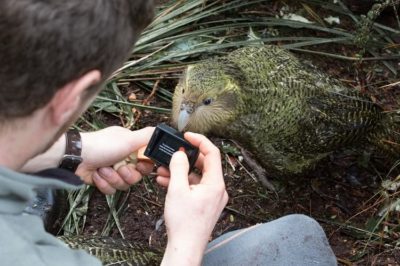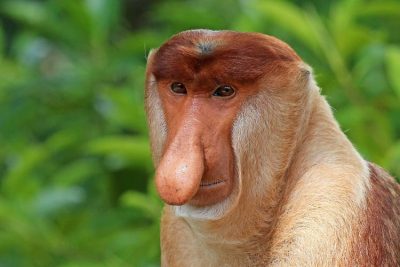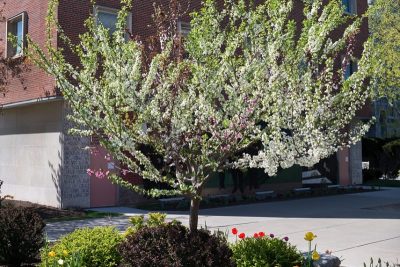The Pando Tree of Utah – The World’s Largest and Oldest Living Organism
Share

Pando tree, quaking aspen. (J Zapell / Wikimedia Commons)
In Latin, the word Pando means ‘I spread out’. This is an apt name for the world’s most famous Quaking Aspen tree that is over a million years old and which, through its shoots, covers an area of around 106 acres at an elevation of 8,848 feet in the Fishlake National Forest’s River Ranger District in Utah, United States.
The ‘Pando’ quaking aspen tree
Burton V Barnes, a botanical researcher, came across the Pando tree in 1968 and was the first researcher to discover that it wasn’t a grove of different trees but, in fact, a single tree with all the stems displaying the same morphological characteristics. The tree received its name ‘Pando’ from the University of Colorado’s researcher, Michael Grant, who, in 1992, called it the world’s largest living organism. It is also the world heaviest known living organism with an estimated weight of 6,000,0000 kilograms.
How the Pando tree grew to be so extensive
The Pando tree developed from seed over a million years ago when the Earth’s climate was vastly different from what it is at present. It thrived and survived over the centuries, but around 10,000 years ago, the Earth’s climate began to change. The region, which once had heavy rainfall and a humid climate, transformed into a semi-arid landscape. This affected the Pando and all the other aspens in the region and curtailed their ability to flower and then produce seeds.
According to researchers, the Pando tree hasn’t produced flowers and seeds ever since and has reproduced through the suckering method. This involves sending up erect clone stems through its lateral root system. The root system spread across a vast area and the new stems thus sprang up at a considerable distance from the main tree. Since the other aspens weren’t seeding and producing new aspens and the Pando appears to have been particularly aggressive in its spread, it had little or no competition from other aspens in the extensive growth.

A trunk from the Pando aspen grove. (Scott Catron / Wikimedia Commons)
The frequency of forest fires in the area also assisted the extensive spread of the Pando tree. These fires prevented the abundant growth of the conifers that would otherwise have competed for space and nutrients with the Pando. The fires, incidentally, had little or no effect on the Pando or its underground root system and the tree was able to keep on proliferating.
At present, the Aspen has over 47,000 stems that look like individual trees and the average age of these stems is 130 years. Known collectively as the Ramel, these stems have all sprung from a root system that is at least 80,000 or more years old. It is not possible to date the root system precisely, so it may very well be even older.
Is Pando tree dying?
After centuries of prolific growth, the Pando tree may now be in a decline. According to a study that researchers published in October 2018, it appears that the tree’s growth slowed down some 40 years ago and this may be an indication that it is dying.
Sections of the grove have thinned as many of the stems have died and toppled over. While it is natural for the stems to die and fall, the problem is that they are not being replaced by new stems at the same rate as the die-offs.
The tree can only live on if it continues to send out new stems, in much the same manner as a human town or country will only continue to thrive if it has young people to take the places of the old. If there are no young people, there will be no one to replace the old when they die, and the town will fall into ruins. Without a regular growth of new stems to replace the old, it is likely that Pando’s future too will be bleak.
Climate and environmental factors aside, the principal danger to the Pando tree is from grazing cattle and mule deer. These animals graze in the aspen grove and either eat or trample on young aspen shoots before they have the chance to develop and grow. As the population of mule deer has grown rapidly in recent times, with no predators like wolves to cull it down naturally, they pose a very big threat to the Pando and the other aspens.
Other threats to the Pando tree include root rot and bark beetle.
Conservation efforts to save the Pando tree
To prevent the decline and to help the tree live on, conservationists are checking all possible causes for the tree’s decline and taking steps to mitigate these.
The Utah State University’s S.J. & Jessie E. Quinney College of Natural Resources has established a research group called the Western Aspen Alliance. They are studying the Pando grove to find a way to save the tree. The United States Forest Service is carrying out several conservation experiments in five acres of the Pando aspen grove to find the most practical ways to save it. They have succeeded to an extent in promoting the growth of new stems and, to protect these, they have fenced off the grove sections to keep out of the mule deer.
However, the attempt to fence off sections of the groves to keep out the mule deer has not worked. The deer have still managed to get across and damage the growing aspen shoots.
There are two things that the authorities can do to save the Pando, first reintroduce wolves in the region to keep the deer population down and, second, issue more licenses in the hunting season.
It may also help to relocate the camping ground that is currently too close to the aspen grove. The mule deer have been congregating around this camping ground for the food they can find here and because there are no hunters in this area. By law, hunters cannot shoot near human habitations to prevent accidents and injuries, and the mule deer, being smart creatures, have come to realize that they will be safer in such areas. So, they hang around the camping grounds and then graze in the aspen grove and, as mentioned, destroy the chances of the new growth.
Culling the mule deer seems a cruel practice, but it is to be either that or to somehow move them en masse from the area. That is the only way the Pando tree will have a chance to continue surviving for a million years more.
Enjoyed this article? Also, check out “Greenland Shark: The Longest Living Vertebrates to Swim The Arctic Ocean“.
Fact Analysis:
STSTW Media strives to deliver accurate information through careful research. However, things can go wrong. If you find the above article inaccurate or biased, please let us know at [email protected]














